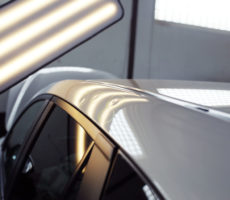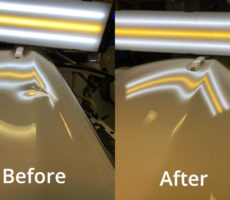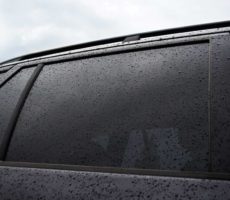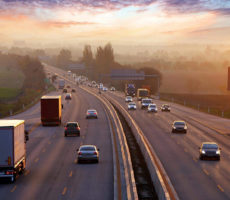Note: Some links may earn us a commission at no cost to you. Learn more in our privacy policy.
Can parking uphill or downhill do any damage to the car in long term? What’s the correct way to do it with or without a curb, and what gear do you leave it in? Let’s take a look.
Is Parking Car on Uneven Ground Good or Bad? Parking on an incline shouldn’t damage your car by default, however, there are certain things you can do to extend the life of your transmission and take precautions just in case your brake fails.
Whether automatic or manual, there is a proper way to park on a slope. As far as brakes failing, this is rare but doesn’t hurt to take the precautions just in case.
Parking on a Hill (and how to do it properly)
When parking on a hill, put the car in neutral, set the emergency brake, then put the car in park (or in gear). This can extend the life of the transmission, and add a failsafe in case your brake fails. This probably won’t happen, but you can never go wrong with adding an extra layer of safety to your driving.
When on a steep incline, the gravitational pull can increase stress on the parking brake. Therefore, relying solely on the brake without additional precautions may hasten wear.

When you put your vehicle in park, a metal bit called “a pawl” slips into some square notches cut into the back of the tail shaft. The transmission doesn’t hold your vehicle in park, that chunk of metal does.
This pawl wears out over time, so you’d want to keep it healthy for as long as possible. When you use a parking brake, it will hold the vehicle stationary before the parking pawl is engaged, which ensures there is no pressure on the parking pawl. And this is why it’s a good idea to apply the emergency brake before placing it in the park.
When parking on a hill, put the car in neutral, set the emergency brake, then put the car in park (or in gear).
This goes for any kind of surface, whether you’re parking on gravel, dirt, or asphalt. Gravel surfaces, for instance, might offer less grip for your tires, increasing the risk of sliding if not parked correctly.
Rules to follow when parking on a hill
There are some rules you to follow when parking on an incline:
- When parking uphill with a curb on the side, turn your wheels away from the curb, so if the brakes fail and the car rolls backward, it will go toward the curb and stop once it hits it.
- When parking downhill with a curb, turn the wheels towards the curb so if the brakes fail and the car starts going forward, it will hit the curb and stop.
- When it comes to distance from the curb, try to park no further than 18” away from the curb, so if the car starts rolling it won’t have much distance to gain momentum to hop the curb and continue rolling. To be completely safe, you can park all the way to the curb.
- For manuals, keep in mind the gear selection when parked: you’d want the shortest gearing because it gives you the most resistance. This is usually a reverse because it is shorter than first, doesn’t matter uphill or downhill.
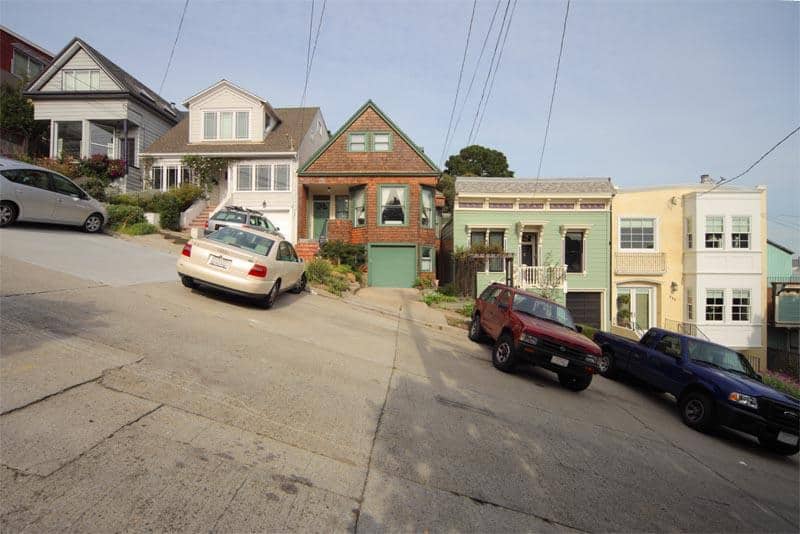
There are a couple of negative things that can happen when parking on a slope for extended periods. We mentioned the automatic transmission parking pawl, and extending the life of your transmission.
It’s also possible that the rainwater may get into places where it shouldn’t be. So, when the car sits there for a long time on a steep hill, water can get in under the hood or under the trunk lid, which can lead to rust, or even mold in your trunk.
Parking on a hill with a manual car? Remember, gears act as a secondary mechanical barrier, ensuring your vehicle remains stationary even if external forces come into play.
Is it better to park uphill or downhill?
Concerning the damage to your car and its parts, there isn’t really a better option out of these two. As long as you turn your wheels so that in the case the brake fails your car hits the curb, you’re good either way. The safer way is to pull your car until the tire touches the curb, and park there.
The most important thing is to be comfortable and safe getting in and out.
While the mechanics of parking don’t favor one over the other, uphill parking does give you a slight visibility advantage when pulling out, ensuring safer exits in busy areas.
Parking on a hill with automatic transmission
There are a few things you should know when parking on a hill with automatic transmission. Always set the emergency brake before you put it in park. If you do it the other way, then a lot of weight might be resting on the transmission, and it may shorten its lifespan.
You can follow these steps when parking on a hill:
- Stop the car and pull the parking brake
- Let go of the brake pedal
- Put the gear in reverse or park
This way the load will be put on the parking brake, and it’s good if you’d want your expensive transmission to last longer.
Here’s a useful video on how to park uphill and downhill:
Parking on a hill without a curb
When you park on a hill with no curb you should turn your wheels toward it, so that in the case of brake failure your car moves away from the road, or in a way so it doesn’t hit another car or whatever else is on the road. You’re better off rolling into a ditch, than into a road or another car.
If frequently parking on inclines without curbs, consider using wheel chocks. These devices provide an extra layer of security, preventing unintentional vehicle movement.
Parking with one wheel on the curb
Parking with a tire slightly rubbing onto the curb may cause issues if you have a weak tire, or if you do that regularly because it can rub the sidewall. However, if you do it occasionally and for shorter periods, it won’t make much difference and shouldn’t damage the car or the tire.
Parking with a tire fully onto the curb repeatedly can lead to excess tire tread wear, damage to tire sidewalls, and eventual damage to components like tie rod ends and ball joints. This will depend on the car, the tire (inflation, age of the tire), the weather, and how you impact the curb. It could also pop or push out air from your tire. It may also be illegal.
Parking on a steep driveway
Sticking to rules from above, when you pull into your steep driveway, always set your parking brake before you shift to park (automatic) or first/reverse (manual), so there’s no stress on anything in the driveline. This way, if the parking brake fails, you’ll have the transmission as a failsafe.
If you don’t set the parking brake, you’ll put some stress on the parking pawl (automatic) or the gear set for the gear you parked in (manual). It’s probably not going to ruin the transmission, but it will put some pressure and wear it out sooner.
Is It Bad to Leave Your Car in Gear When Parked?
Putting your car in gear is suggested whenever you set your parking brake because it will act as a failsafe if your parking brake fails. So it’s not bad at all to have that failsafe and leave your car in gear when parked.
What gear to leave the car in when parking on a hill?
For automatic transmission, either park or reverse should be fine. You don’t want to leave it in neutral, because of the extra safety in case the brake fails. For manuals, either first or reverse. There’s some debate whether you should put in 1st when uphill and reverse when downhill. Generally, you can use reverse for both uphill and downhill parking, as it’s the shortest gear. The direction of the hill doesn’t matter much.
The main difference between reverse and first gear is that reverse has a lower gear ratio, which means that it will hold both directions on a steeper incline better than first gear will.
Therefore, the reverse will always be a better option because it’s the shortest gear, as it will be harder to turn the engine over compared to the first gear, because of the gear ratio.


